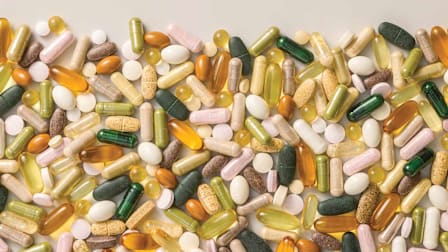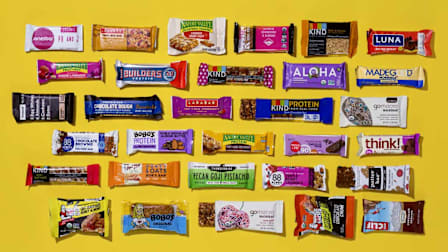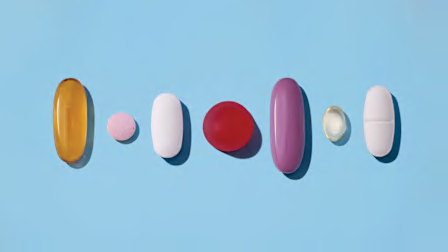The Benefits of Tea
How to pick the healthiest types for you

Maybe it’s a cold and rainy morning and you need a gentle energy boost. Or you want to linger over a relaxing beverage after lunch with a friend. Perhaps you simply want to wind down at the end of a busy day.
The perfect drink for all these situations, and one found in the pantries of more than 80 percent of U.S. households? A fragrant cup of tea, with a squeeze of lemon or a little milk or honey, or enjoyed as is, with nothing added at all.
But what’s actually in that English breakfast or chamomile tea you’re sipping? At its most basic, tea is a mix of water and dried plant material. So-called true teas like black (such as English breakfast, Earl Grey, and Darjeeling), green, and white are all made from the leaves of one plant: Camellia sinensis. Their flavors and colors can vary from light and bright to dark and earthy.
- True Teas: Black Tea Pu Erh Oolong Tea Green Tea White Tea
- Herbal Teas: Chamomile Ginger Rooibos Peppermint
True Teas
While the five main types below are all made from the Camellia sinensis plant, each one’s particular taste, aroma, and appearance depend on when the leaves are picked and how they’re handled afterward. Their levels of healthful compounds may vary, too.
Black Tea
What it is: This tea is made by crushing and drying the leaves, which releases an enzyme that darkens them—hence the name. Each kind is a bit different. English breakfast, for instance, is usually a blend of two rich-tasting black teas, while the oil of bergamot added to Earl Grey gives it a floral and almost sweet scent.
Flavor: Black tea has plenty of tannins, plant compounds that create the brew’s earthy flavor and slight but not unpleasant bitterness.
Benefits: People who often drink black tea may be less likely to have a heart attack, possibly because theaflavins—the polyphenols that dominate—help control inflammation and relax blood vessels.
Caffeine: 30 to 50 mg per 8-ounce cup.
Pu Erh
What it is: Dining at a Chinese restaurant? There’s a good chance the tea you’re served is pu erh, which is made by fermenting damp tea leaves (sometimes for up to 30 years), allowing fungal mold to make the leaves less astringent, says tea expert Michelle M. Francl, PhD. The leaves are then twisted, sun-dried, and rolled.
Flavor: Depending on how long leaves have been aged, this brownish-red brew can range from mellow to slightly bitter.
Benefits: Studies have linked pu erh to lower risks of obesity, high cholesterol, diabetes, and Alzheimer’s disease.
Caffeine: 30 to 100 mg per 8-ounce cup.
Oolong Tea
What it is: To create oolong, tea leaves are partly dried and then gently rolled, a process that can give them a yellow-green hue. Oolong is often part of Chinese wedding tea ceremonies, but it’s also widely sold in bags and loose for enjoying at home.
Flavor: Like other teas, the taste can vary quite a lot, depending on the growing climate and how the leaves are dried and rolled. Some oolongs are light and floral, others are heavier and more woodsy. “It often has many layers of flavors,” says Cindy Li, founder of Uproot Teas in Boulder, Colo.
Benefits: Oolong’s primary antioxidants—which are known as theasinensins—may enhance immunity and reduce inflammation.
Caffeine: 30 to 50 mg per 8-ounce cup.
Green Tea
What it is: These leaves are steamed right after picking, so they retain their green color. There are many types—like sencha, gunpowder, and Hojicha—each with its own characteristics. For the popular matcha, leaves are ground into a powder and whisked into hot water.
Flavor: It typically has a grassy, floral, fruity taste, and slight astringency.
Benefits: Green tea is loaded with the antioxidant epigallocatechin gallate (EGCG), among others, and may be heart-protective. One study found that a cup or two a day may cut heart disease risk by 11 to 16 percent. There’s been buzz about potential cancer-prevention properties, too, but nothing definitive.
Caffeine: 30 mg per 8-ounce cup; matcha may have a bit more.
White Tea
What it is: Made from young tea leaves that are dried right after being picked, white tea is lighter in both color and flavor than other true teas. While some may be sold simply as white tea, you may also spot boxes and tins labeled as, say, white peony (aka bai mudan) or silver needle, once so prized that they were reserved for royalty.
Flavor: You can expect a delicate floral and grassy taste.
Benefits: White tea has the highest levels of antioxidants, including EGCG, of all true teas—so sipping it often is likely to confer the benefits of all true teas.
Caffeine: 35 mg per 8-ounce cup.
Herbal Teas
Herbal tea can be crafted from a wide variety of plant materials, including herbs, flowers, spices, roots, fruits, and bark. Unlike true teas, most herbals have no caffeine. Some contain just one ingredient, others a blend. Here’s what to know about four popular herbal teas.
Chamomile
What it is: Dried chamomile flowers are used either whole (which you’ll typically find in loose tea) or broken into pieces (which is how it usually appears in tea bags).
Flavor: This popular tisane is mildly floral and sweet. Cindy Li of Uproot Teas recommends loose, whole-flower chamomile for the best-tasting brew.
Benefits: Chamomile has a reputation for being a sleep remedy, and research bears that out. In a study published this year in the journal Complementary Therapies in Medicine, scientists found that drinking chamomile tea before bed led to better slumber. It also has anti-inflammatory properties, may improve digestion, and has traditionally been used as a diuretic.
Ginger
What it is: Whole ginger root that’s dried and sometimes ground, which releases its flavors when hot water is poured over it. Some bagged or loose ginger teas you’ll see in stores or online, like the one from Yogi, also contain other herbs, such as lemongrass or licorice root.
Flavor: Much like fresh ginger does when it’s added to foods, this tea tastes somewhat peppery and slightly sweet, and has a strong and spicy aroma.
Benefits: Ginger has traditionally been used to ease indigestion, nausea, and constipation. Research also suggests that the tea may reduce inflammation and that it has some cancer-preventive properties.
Rooibos
What it is: You’ll most often see this under the name rooibos, but it’s also known as red bush tea. Rooibos comes from the dried leaves and flowers of Aspalathus linearis, a plant that grows in South Africa. Rooibos tea is sold loose or in bags on its own and is often used as a base for various herbal blends or flavored concoctions like Celestial Seasonings’ Madagascar Vanilla Rooibos Tea and Harney & Sons Holiday Herbal.
Flavor: Rooibos has a flowery taste with a woodsy essence. It’s naturally sweet enough that you may not need to add any sugar or honey.
Benefits: Like so many fruits, vegetables, and spices, rooibos is full of the potent antioxidants known as flavonoids. Some research suggests that this tea may help reduce high levels of LDL ("bad") cholesterol and blood sugar.
Peppermint
What it is: The dried leaves of the peppermint plant.
Flavor: Peppermint has a sharp and minty taste. You can sip loose or bagged peppermint tea on its own (it’s pretty widely available both ways) or temper its strong flavor by choosing a blend like Bigelow Tea’s Mint Medley, which also contains its milder cousin, spearmint. You might also want to try other combination teas that include peppermint. These may have ingredients such as ginger, licorice root, or even chocolate. Some of the latter, such as the Art of Tea’s Dark Chocolate Peppermint Tea, may have some caffeine, so you’ll want to double-check ingredients lists if you’re looking for a relaxing beverage to sip before bed.
Benefits: While the scientific research on peppermint tea has been limited, this beverage has long been used as a home remedy to aid digestion and ease gas and bloating. But if you have the chronic heartburn known as GERD, take it easy: Peppermint tea may worsen it.
Editor’s Note: This article also appeared in the November/December 2024 issue of Consumer Reports magazine.




















